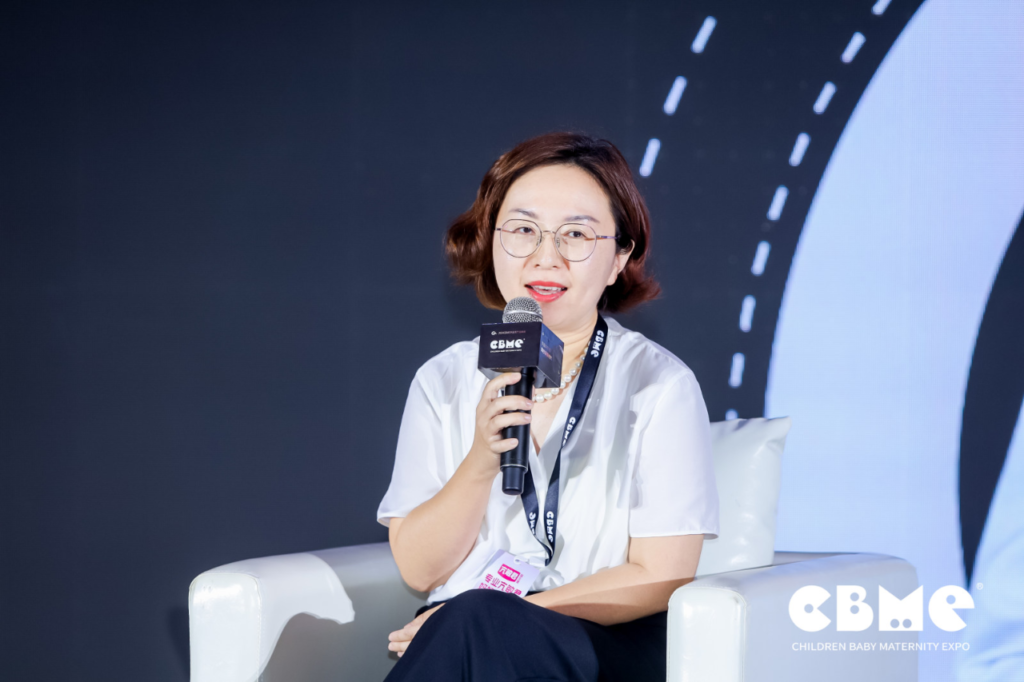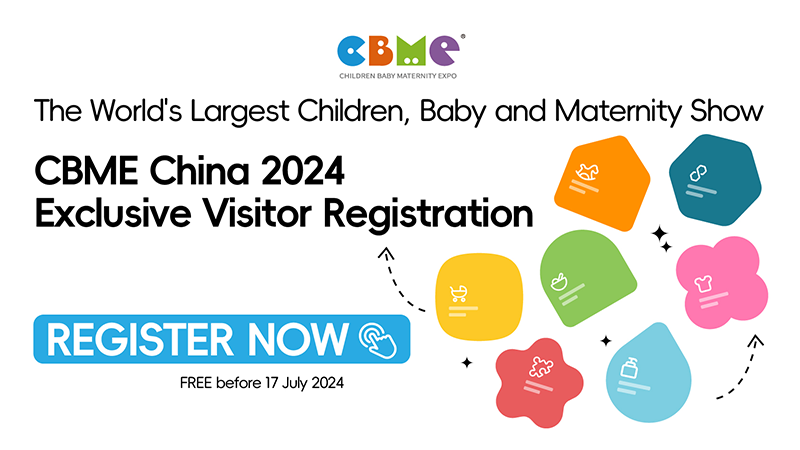The market potential for the second category in the maternal and baby sector is enormous. The topic of how to continually unearth new growth points and optimize product structure and service experience to enhance profitability while reducing operational risks is worth discussing across the industry. At the 2024 CBME Maternity, Baby and Child Industry Summit, we invited the founder of Xinger Family Tong Xin and Sun Liting, General Manager of Heilongjiang Jiamusi’s Guanri Pretty Baby, to discuss how stores can effectively operate the second category.

Q&A:
First, please introduce the development status of the second category in your respective stores.
Sun Liting, General Manager of Heilongjiang Jiamusi Guanri Pretty Baby:
When we were making strategic planning for our business and analyzing whether there was a way out for other major categories, we chose nutrition products. It’s not that we can’t sell formula milk or diapers well, but those categories really need several customers for support. However, we believe that nutrition products can be significantly improved. In my sector, nutrition products are positioned not as a sales category but as a service section of the maternal and baby retail store. Looking at long-term development, whether it’s an economic downturn or a decrease in newborn birthrate, what truly keeps customers in your store is the service. So, after a long analysis, we finally decided to make nutrition products the focus of our service sector. Currently, the sales of nutrition products are second only to the formula milk category in our store.
Tong Xin, Founder of Xinger Family:
Why we chose clothing as our second category is simple. My wife likes fashion and beauty, and she couldn’t find the style or designs she wanted for our daughter, so in early 2017, we adopted a buyer’s shop model. Another reason we considered is that for maternal and baby stores, we may only be able to cater to ages 0-3. What about the business for children older than 3? I don’t want the customers we have worked so hard to attract to shift online after the age of 3. I want to keep our customers in our store, maintaining them within our space.
So, based on this idea, we opened a second clothing store, which we felt was a viable approach. For the third store, we directly combined maternity, baby, and clothing into one, creating a collective buyer’s shop for maternal and baby wear. When we conduct activities, we can do a store-wide bundling. We have always adhered to the principle that when we compete with other stores or online, why should customers choose us? We must achieve “what others don’t have, we have; what others do have, we do better.”
Q&A:
What experiences/methodologies can be shared in the operation of the children’s clothing category?

Tong Xin, Founder of Xinger Family:
We deal a lot with clothes, which account for about 30%-40% of our inventory, a relatively high proportion.
For clothing, we have a dedicated merchandiser, and we also arrange for them to go out and learn.
It might not be suitable for all individual stores, but my advice is that sometimes there are shortcuts that you can imitate. For example, if I want to do a clothing display, generally speaking, if you operate a brand, the brand will also provide you with some display pictures. Like our kind of buyer’s shop, we can imitate others’ display methods; it’s a shortcut.
Secondly, as some teachers have mentioned before, you need to create scene-based displays. When making selections, styles that are popular in adult fashion this year, at the slowest, will extend to children’s clothing the next year or, at the quickest, the next quarter. For example, the currently popular retro and outdoor styles are all visible in children’s clothing.
But when you let children choose or when adults choose for them, you must pay attention to creating scenes. Like when we feature outdoor items, we will also set up tents in the store.
Personally, I believe that clothing must be displayed in a scene-based manner. Customers can buy clothes anywhere, but if they come to my store, they must experience a scene-based dress-up.
Q&A:
How to conduct consumer education for the nutrition product category, how to encourage consumers to keep buying and increase repeat purchases?

Sun Liting, General Manager of Heilongjiang Jiamusi Guanri Pretty Baby:
I started doing business in 2012, and my professional identity is a doctor at a local tertiary hospital. Due to family reasons, at the time, my second child was born with severe milk protein allergy, premature at 30 weeks, and after eating amino acid-based formula milk for over half a year, we managed to regulate his condition. That is why, due to family factors, I took unpaid leave from the hospital to focus on the business.
Everyone has mentioned that nutrition products are an opportunity. We operate stores that specialize in health management; the biggest difference from hospitals, especially in Western medicine, is that they follow evidence-based medicine and treat existing diseases. Our maternal and baby store needs to focus on preventative health care for children that are in the intermediate stage between good health and imminent diagnosis of certain pathological diseases.
When we started with nutrition products, the first thing we analyzed internally was the lack of professionalism among our staff, also known as salespeople, and store assistants. So, speaking for myself, who is now popular in creating IP, personal branding, I become the leader within the enterprise, stepping into the role of the store’s nutritional therapist, health consultant.
This point of view differentiates me from other stores; my identity and my role as a doctor are not easily replicated, but I hope to inspire others.
When you want to deal with nutrition products, first ask yourself if you are professional enough. Even if you don’t have a medical license or a high degree, should you first improve yourself? This includes myself. While I worked in a gastroenterology department at the hospital, which is somewhat related to child feeding, our usual patients are adults; I am not adept in the maternal and baby nutrition sector and many concepts are new to me.
Though I can rely on my knowledge in anatomy and biology, in everyday application, I still need to supplement my understanding. This includes studying for certifications such as public nutritionist, health manager, registered dietitian, and childcare evaluation specialist to enrich my knowledge and provide more professional services to customers and children.
So, to do well in nutrition products, you need to be professional; the higher your level of expertise, the wider your moat, and the stronger your defensive barrier, making a stronger difference from any other local stores that might try to mimic or compete with you.






